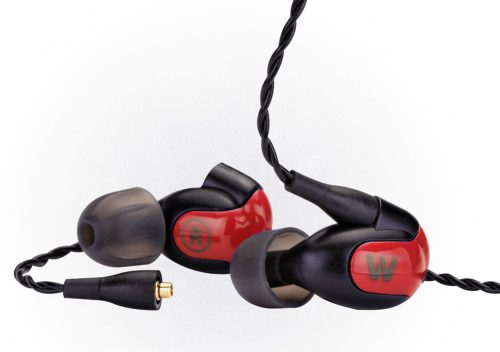All headphones, earbuds, and speakers use a sound transducer or driver to create sound. There are a number of different types of drivers that can do so, but those most commonly found in in-ear monitors are balanced armatures and dynamic drivers. Read on to learn the difference between balanced armature driver vs dynamic driver.
Balanced armatures (BAs) consist of a coil wrapped around an armature. This coil is suspended between two magnets. As electric current passes through the coil its changes causes fluctuations between the magnet and the coil. Changes in the magnetic field then cause the armature to vibrate at about a thousand times per second. A diaphragm connected to the armature moves as a result creating sound waves. This particular method is best at targeting specific frequency ranges and can be tuned to do so by using a cross-over method. Basically, this cross-over will split the sound signal into multiple frequency lines and these lines are sent to a multiple drivers. This is why IEMs tend to have multiple drivers to increase their reach in terms of frequency response.

BA drivers are called “balanced” because there is no net force applied to the armature when it is centered in the magnetic field. Because of this, balanced armatures are better at isolating sound. In addition, this type of design requires less power than dynamic drivers.
Example: Westone W30 features 3 balanced armature drivers. Available at Audio46 and (use discount code “majorhifi” to receive a percentage off of your order, restrictions apply) and Amazon.

In contrast, dynamic drivers are better at spanning the entire frequency range. They are built with a voice coil attached to the diaphragm. When a current is sent through the driver which vibrates the voice coil between two magnets resulting in movement in the diaphragm and voila, sound. Air moving through the dynamic driver actually provides better bass representation and overall offers a more natural and cohesive sound.
Example: Sennheiser IE 80 features a dynamic driver. Available Audio46 at Amazon.
So, what does this all mean for your ear (and your wallet)?
Since balanced armatures require more drivers to better deliver on various parts of the frequency response range, these IEMs tend to be more expensive than dynamic drivers. BAs also offer more clarity in that regard. However, they deliver more on treble. Dynamics, on the other hand, while lacking in pristine detail, they present a “warmer” and more coherent tone with better bass reach. Dynamics are also typically larger than BAs so anticipate larger earbud housings. but, you don’t have to rule out getting the best of both worlds. There are some models that offer both.
Hope our article “Balanced Armature Driver vs Dynamic Driver” cleared up any questions you may have. If not, leave us a comment down below.
MAJORHIFI may receive commissions from retail offers.








